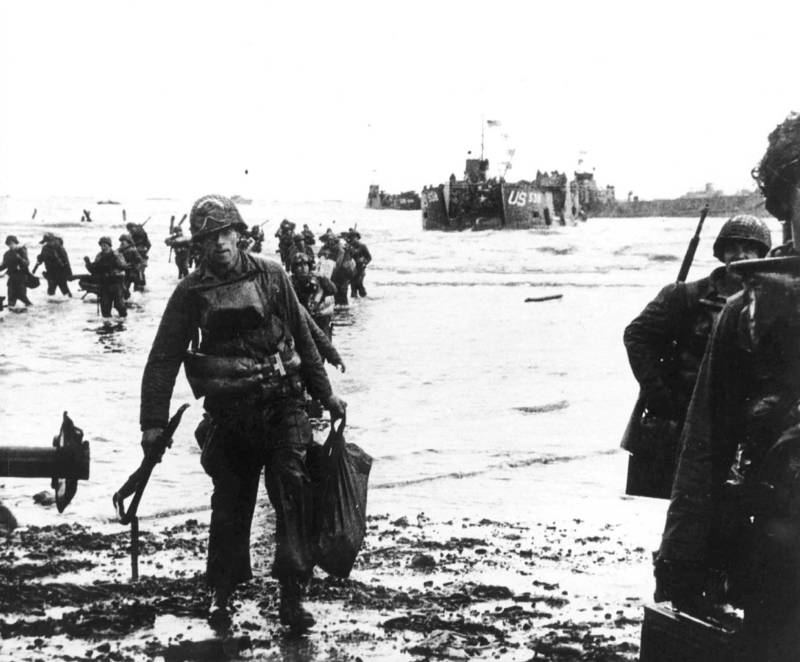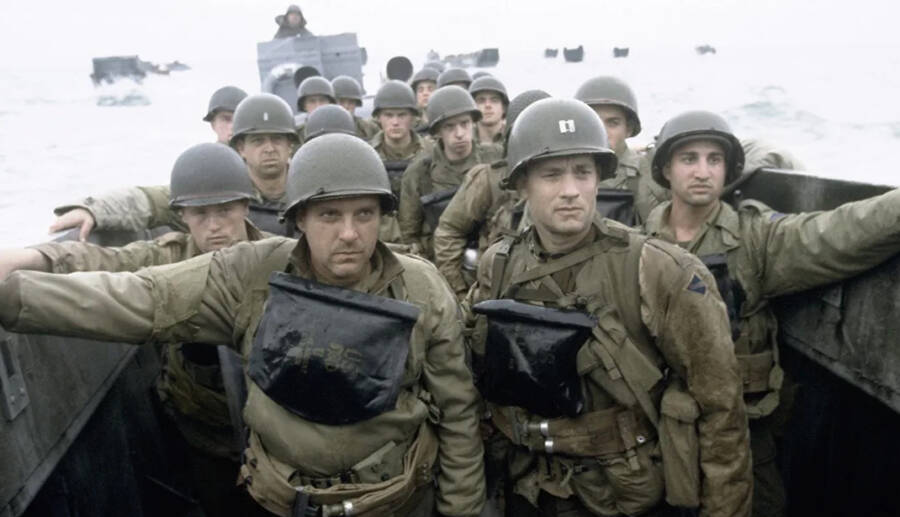Saving Private Ryan: The Fog Of War Movies

Wikimedia CommonsAmerican troops land on Utah Beach on D-Day.
As far as movies based on true stories go, Steven Spielberg’s 1998 World War II film Saving Private Ryan may be the most historically accurate on our list.
The film hinges on the retrieval of James Francis Ryan, played by Matt Damon, who is the last enlisted brother in his family still alive. In reality, the U.S. War Department did try to prevent families from losing every one of their sons to war, and so ordered a Directive for Survivorship.
According to History, the official order came about as the result of a particularly tragic loss in the Pacific Theater. When the Japanese sank the U.S.S. Juneau on Nov. 13, 1942, during the Battle of Guadalcanal, five brothers who were all stationed aboard lost their lives.
It was unusual for siblings to be stationed together, but George, Francis, Joseph, Madison, and Albert Sullivan requested to serve in the U.S. Navy together after a friend of theirs died at Pearl Harbor. When they all perished alongside at least 30 other sets of brothers, the U.S. War Department amended its practices.
As such, the colloquially known “Only Son” policy was set in motion. In 1944, when brother of four Sergeant Frederick “Fritz” Niland became the last-living brother in his family, it was ordered that he be sent home. This instance directly inspired the story of James Francis Ryan and the narrative of Spielberg’s film.

DreamWorks PicturesVeterans have praised Spielberg’s depiction of D-Day for both its emotional and factual accuracy.
Unlike in the movie, Niland was never “lost.” No search party was required to locate him. Instead, a chaplain of the 501st Regiment named Fr. Francis Sampson merely sent some paperwork to his station and Niland went home. But the poignant loss of his brothers was all too true.
Preston and Robert Niland had both enlisted in the service before the United States officially entered the war. The other two brothers, Edward and Fritz, volunteered in November 1942 for personal reasons. With the Only Son policy now in place, the four siblings were dispersed across separate units. Unfortunately, this didn’t keep them out of harm’s way.
Edward served in the Pacific as a pilot in the U.S. Army Force, Robert was stationed in the 82nd Airborne Division, Preston served with the 4th Infantry Division, and Frederick was placed in the 101st Airborne Divison, 501st Regiment.
Edward was shot down in Burma and went missing in May 1944. Robert died on D-Day. Preston followed a day later while fighting near Omaha Beach.
When the Army realized that only one of the four sons was likely still alive, Frederick was retrieved and shipped back to America via England, where he completed the rest of his service with the military police. Miraculously, Edward survived his time as a prisoner of war in Burma and was sent home safely as well.
The atmosphere of the movie, too, was close to reality. For instance, former Chief of Military History at the U.S. Military Academy, Colonel Kevin Farrell, praised Spielberg’s depiction of a “sense of chaos and confusion.”
“I often joke that it’s hard enough to figure out what your own guys are doing, let alone find out what the enemy is doing,” he told the National WWII Museum. “That ambiguity, that chaos, I think comes across very well in the film, but most especially with the landing on the beach.”
While Spielberg may have changed character names or condensed time frames to suit the cinematic experience, the film largely received praise from those most familiar with the tragedies of war.





